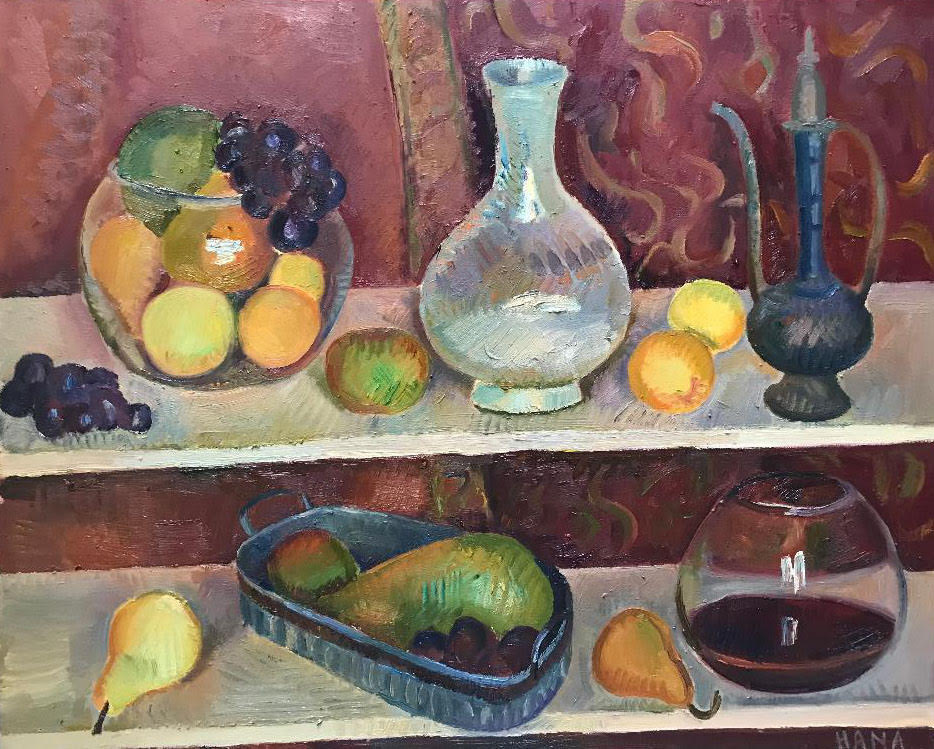
Quite a few of Hana Vater’s still-life oil paintings include books. This is not just because she’s an avid reader or finds them useful props. Their titles alert us to artists she loves. She sometimes paints sketches of well-known works on a painting’s background wall. These don’t just help orient us in space, they hint at her own artistic dialogue with the history of art. Vater embraces masters such as Poussin, Ingres, the Le Nain brothers, and Chardin, whose mastery of color and form reflect a concentrated observation of nature. Cézanne and Morandi are her favorites, not surprising given their pivotal stature in modern still-life painting. This is not imitative adaptation or reliance on models. Vater has absorbed their lessons but brings her own eye and energy to the still life.
A graduate of the Academy of Art in her native Latvia, Vater assimilated the founding principles of Latvian art: the realistic traditions of 19th and 20th century European painting. But Latvian art’s special emphasis on colorism has been her stylistic mainstay and “source of artistic satisfaction.” With international experience as a teacher of painting, drawing, sculpture, and graphic arts, she has exhibited in Riga, Tel Aviv, the Seattle area, and New York City. Like Morandi, who taught schoolchildren in Bologna, she has also given art classes to children.
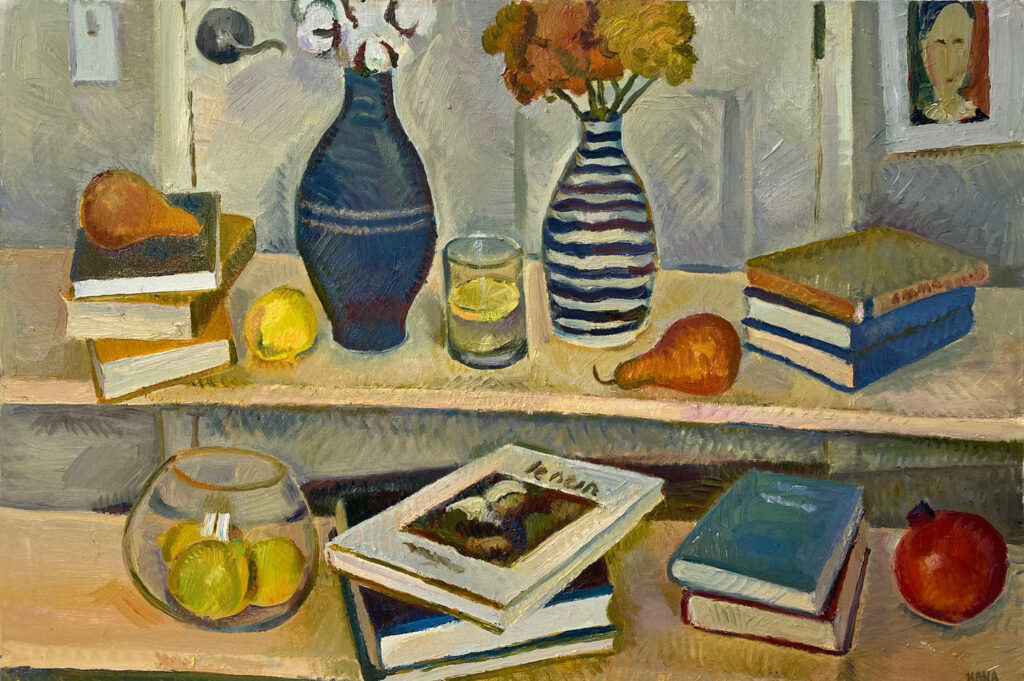
Vater is an artist in constant conversation with nature. Her primary key to its mysteries is color: “Every time I work on a still life, I challenge myself by asking ‘Where is the secret of this little piece of nature and the mystery behind this beauty?’ I search for the answers to these questions by carefully ‘reading’ the colors of nature, comparing them with one another, and fixing them on my canvas. In a still life I see a model of nature, its mysterious representative.” Her complementary goal is to “achieve the illusion of depth within the picture itself (and) to make the surface of the canvas disappear.”
She uses Cézanne’s non-traditional tilted perspective, bearing in mind that the painting is “about conveying space through color.” She sees the world as “a unique composition of various color spots and (tries) to discover the harmony within this natural chaos.” Her selection and arrangement of objects and backgrounds often take as much time as the painting itself. She thinks of them as she would a landscape or cityscape, seeking harmonious proportion and balance.
Vater’s Tribute to Pompeii celebrates the ancient heritage of still life in European art. In the two-tier setting typical of first-century Roman painting, the glass globe with fruit in the upper left and the wine glass in the lower right serve as counterpoints. The solidity of the ceramic bowl, projecting slightly toward us, makes the almost-opalescent glass vase and long-necked pitcher above seem delicate and graceful. A wine-colored curtain-like background evokes the natural tones of Pompeiian frescoes. As it would have in one of the city’s villas, the painting offers comfort and welcoming hospitality.
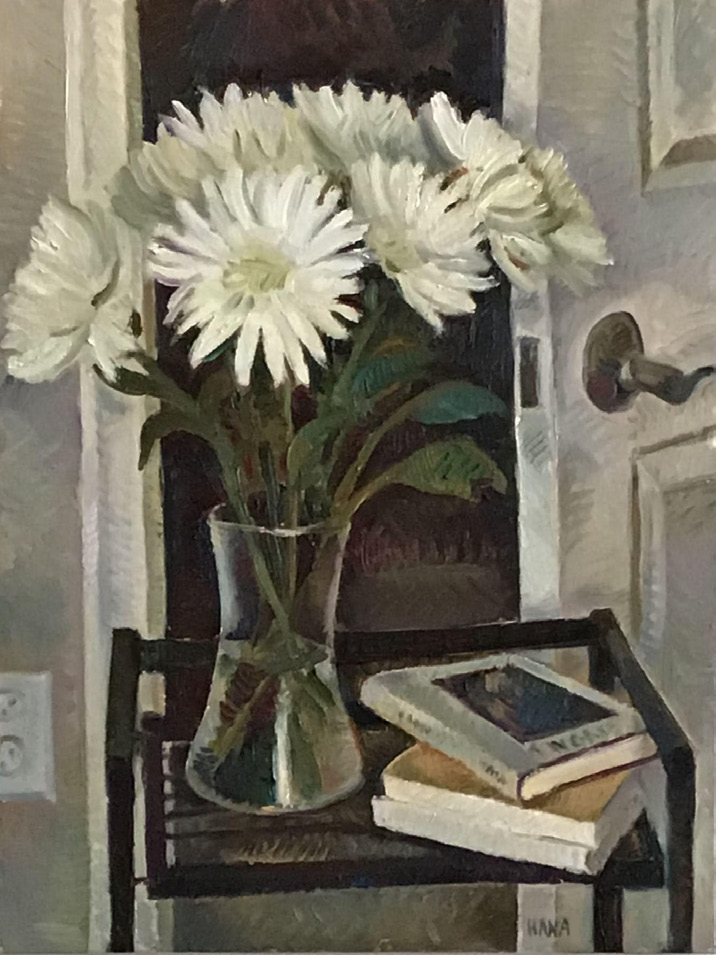
Two works show Vater’s deft control of focus and atmosphere through color and space. In Still Life with Lemons, the fruits —on the shelf, and in water and glass— bear out Cézanne’s observation that “shadow is a color as light is, but less brilliant.” While vigorous brushstrokes on the door and wall create a sense of flickering light and shade, the vases’ cool blue shades and horizontal stripes lend a restful mood. Each object and grouping have their own measured placement in the formal arrangement. A glimpse of the floor leading to the door lets us perceive our own place in the room.
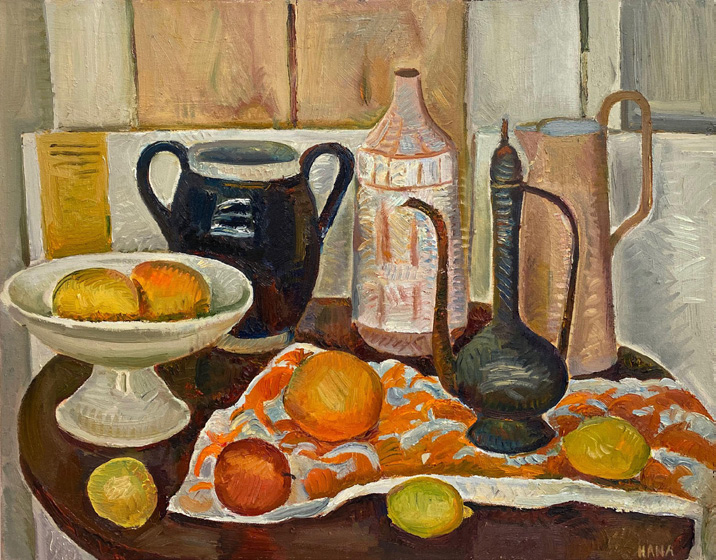
In contrast, Still Life with Fruits wraps us in a more intimate space. A half-moon framework partially encircles a round table; a vivid orange-and-white runner seems casually thrown over the top. The matte white bowl and lustrous black jar echo the table’s contours. Curving outlines of the teapot overlap with the pale bronze, iridescent cylindrical pitcher and the tall patterned jar. Still Life with Lemons and Still Life with Fruits highlight Vater’s respect for another Cézanne trait: her colors often change within one brushstroke, which enlivens both muted and brilliant hues. Such subtle modulation also illuminates the quiet, dusty grays of the Still Life with Books 1 and the windswept, sunlit blues of Still Life at Seaside.
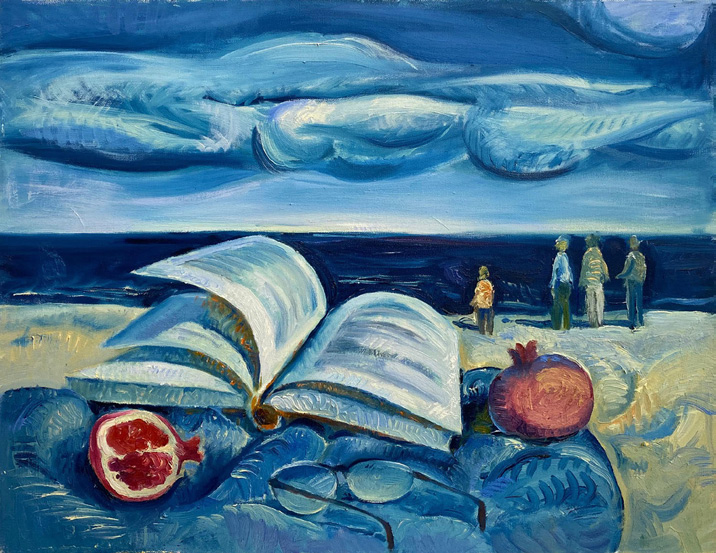
In an 1896 letter to his son, Camille Pissarro noted that “We ask nothing better than to be classics, but we want to achieve that in terms of our own experience.” In this spirit, Vater honors and challenges the traditions of still life but unveils the mystery of our world with her own perceptive spirit and versatile style. Her gift to us is an invitation to discover not just her paintings but the endlessly varied world we live in. G&S
© Mary F. Holahan, 2022
Hana Vater can be seen in the year-round Salon at Montserrat Contemporary Art Gallery, Montserrat.us and is also represented by Agora-Gallery.com





Leave a Comment